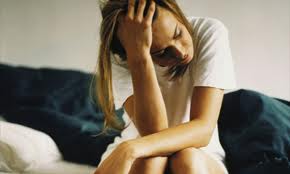 Exercise is a common prescription for insomnia. But spending 45 minutes on the treadmill one day won’t translate into better sleep that night, according to new Northwestern Medicine® research.
Exercise is a common prescription for insomnia. But spending 45 minutes on the treadmill one day won’t translate into better sleep that night, according to new Northwestern Medicine® research.
“If you have insomnia you won’t exercise yourself into sleep right away,” said lead study author Kelly Glazer Baron, PhD, a clinical psychologist and director of the behavioral sleep program at Northwestern University Feinberg School of Medicine. “It’s a long-term relationship. You have to keep at it and not get discouraged.”
This is the first long-term study to show aerobic exercise during the day does not result in improved sleep that same night when people have existing sleep problems. Most studies on the daily effects of exercise and sleep have been done with healthy sleepers. The study also showed people exercise less following nights with worse sleep.
The study was published August 15 in the Journal of Clinical Sleep Medicine. Baron conducted the study with coauthor Kathryn Reid, PhD, research associate professor of neurology at Feinberg and senior author Phyllis Zee, MD, PhD, the Benjamin and Virginia T. Boshes Professor of Neurology at Feinberg and director of the Sleep Disorders Center at Northwestern Memorial Hospital.
"This new study shows exercise and sleep affect each other in both directions: regular long-term exercise is good for sleep, but poor sleep can also lead to less exercise. So in the end, sleep still trumps everything as far as health is concerned," Zee said.
Baron decided to analyze the daily effect of exercise after hearing her patients with insomnia complain the exercise she recommended didn’t help them right away. “The prevailing thought is that exercise improves sleep, but I thought it probably wasn’t that simple for people with insomnia,” reported Baron.
Why does it take time for exercise to impact sleep?
“Patients with insomnia have a heightened level of brain activity and it takes time to re-establish a more normal level that can facilitate sleep,” Zee said. “Rather than medications, which can induce sleep quickly, exercise may be a healthier way to improve sleep because it could address the underlying problem.”
The study participants were older women, who have the highest prevalence of insomnia. Exercise is an optimum approach to promote sleep in an older population because drugs can cause memory impairment and falls. Baron thinks the results also could apply to men because there is no evidence of gender differences in behavioral treatments for insomnia.
The key message is that people with sleep disturbances have to be persistent with exercise.
“People have to realize that even if they don’t want to exercise, that’s the time they need to dig in their heels and get themselves out there,” Baron said. “Write a note on your mirror that says ‘Just Do It!’ It will help in the long run.”

 The millions of middle-aged and older adults who suffer from insomnia have a new drug-free prescription for a more restful night’s sleep. Regular aerobic exercise improves the quality of sleep, mood and vitality, according to a small but significant new study from Northwestern Medicine and the Feinberg School of Medicine. Insomnia is more prevalent in women.
The millions of middle-aged and older adults who suffer from insomnia have a new drug-free prescription for a more restful night’s sleep. Regular aerobic exercise improves the quality of sleep, mood and vitality, according to a small but significant new study from Northwestern Medicine and the Feinberg School of Medicine. Insomnia is more prevalent in women. The most recent statistics on the women who participate in our
The most recent statistics on the women who participate in our